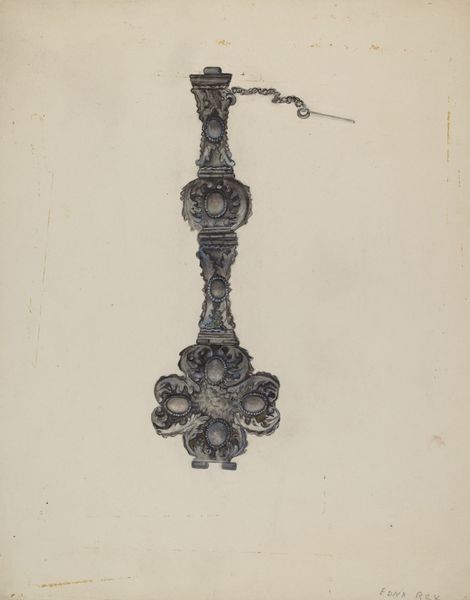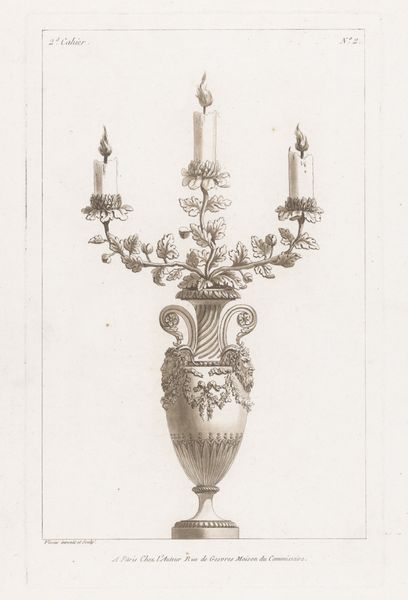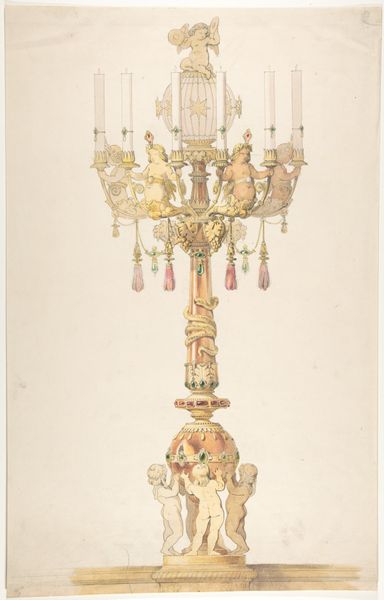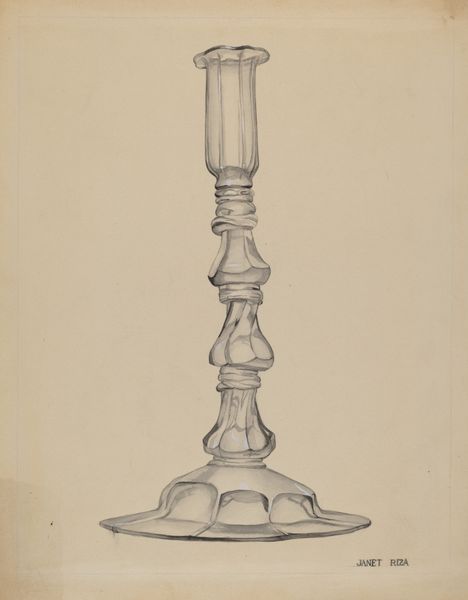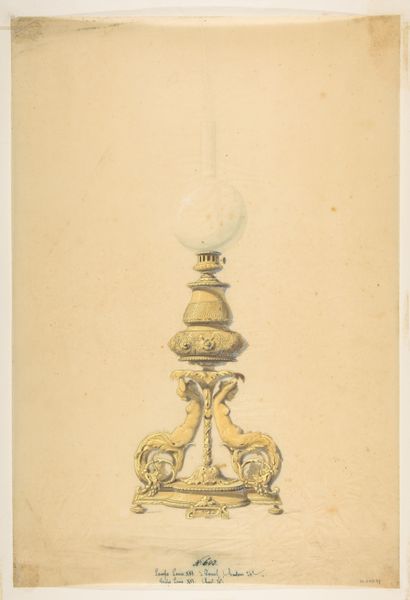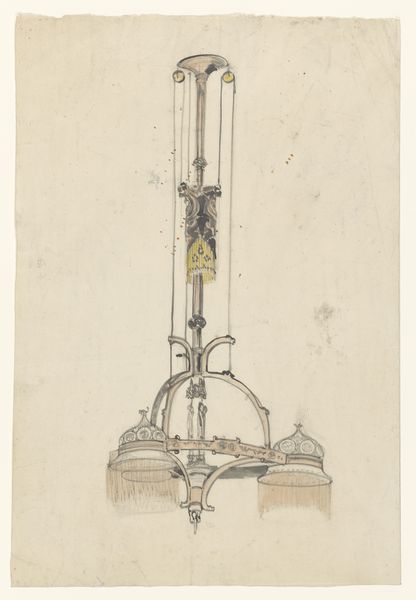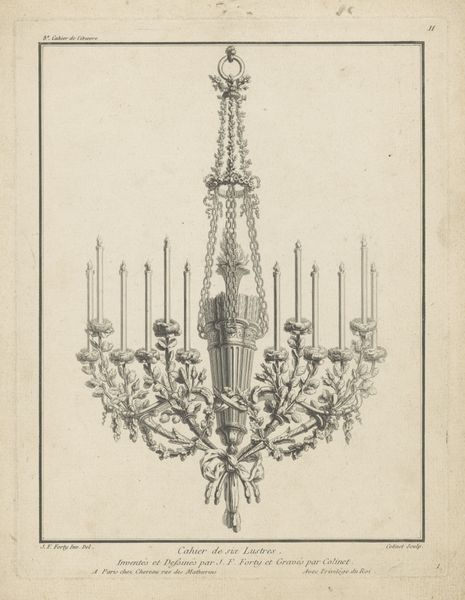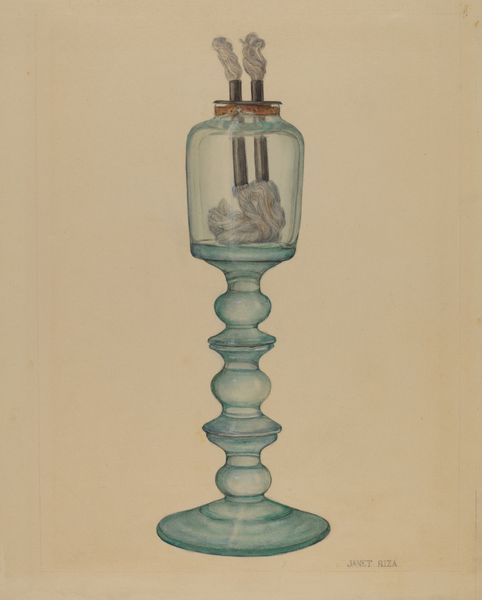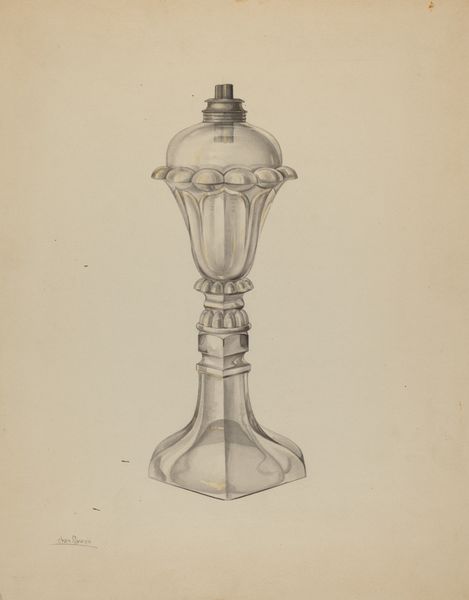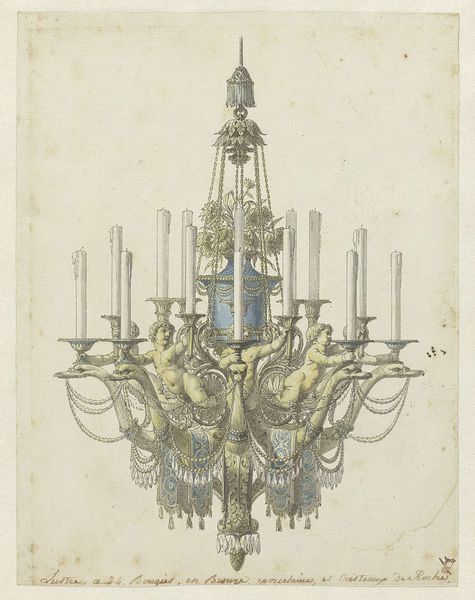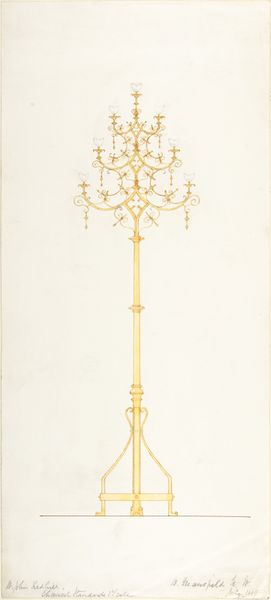
drawing, print, metal
#
drawing
# print
#
metal
#
geometric
Dimensions: sheet: 11 15/16 x 9 15/16 in. (30.3 x 25.2 cm)
Copyright: Public Domain
Editor: This is a design for a candelabrum, dating from somewhere between 1800 and 1900. It's an anonymous work at The Met, rendered in drawing and print, intended to be made of metal. The geometric aspect gives a cold feeling, a metallic mood, literally and figuratively, and makes me wonder about how this relates to the labour to manufacture this object. What's your perspective? Curator: The candelabrum is not just an object of illumination; it embodies the socio-economic forces at play during its production. Think about the access to metal and manufacturing technologies, and who controls those means. Are these luxurious items or pieces created for a broader market, influencing how labor and skills were valued and distributed? Editor: That’s an interesting way to look at it. I hadn't considered the material itself as a reflection of social context, like access to certain metals for example. Was there something about the candelabrum form, during the 19th Century that related to class and labour? Curator: Certainly. The ornate details and complex design you see indicate a level of craftsmanship beyond mere functionality. Consider who could afford such intricate metalwork. The material value and the craftsmanship are indicators of status. We also have to think of the design process itself – where did the artisan draw his inspiration from? What impact might it have? Editor: So it is not simply about light but about who gets to enjoy this kind of light. It’s making me think about industrialization and how craft became stratified, too. Curator: Exactly. By questioning its materiality and production, the candelabrum becomes a window into the 19th-century world of manufacturing and class structures. Editor: I see how shifting the focus to the materiality gives us a glimpse of 19th-century economic and social forces at work! Curator: Precisely, by analyzing this "design", you learn about consumption, artistic intention, production capabilities, distribution, and labour management of that era. It gives a unique point of view, doesn't it?
Comments
No comments
Be the first to comment and join the conversation on the ultimate creative platform.
